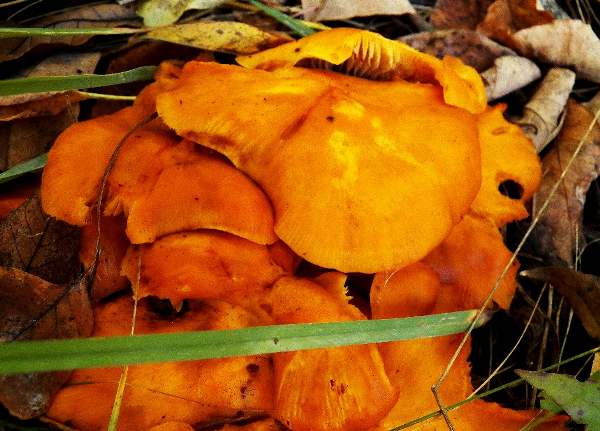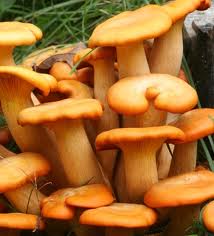

Michael Kuo () declared the illumination as the “largest and most insidious conspiracy in the mycological world,” though he subsequently issued a corrigendum that the degree of light was dependent on whether the mushroom was kept moist after picking.


If you pick a young mushroom and observe it in a very dark place, the gills will glow with a faint green hue.

The quantity and quality of its light is highly subjective to the age and habitat of the mushroom, to the mode of storage if picked and to the time and location of light observation. illudens known as bioluminescence is its most well-known and most controversial feature. Potpourri: The jack-o-lantern-like glow of O. The specific name is likely from the Latin illudere, to mock or jeer, which is taken to mean deception in similar fashion to its association as the root word for illusion. Scientific Name – Omphalotus illudens The generic name is from the Greek omphalos which means navel, probably in reference to the long, tapering, umbilical stem. It refers here to the fact that the mushroom glows in the dark. It is synonymous with ignis fatuus (Latin for ‘foolish fire’), one of the names for the luminous swamp gas sometimes called ‘will-o’-the-wisp.’ The name is more prominently associated with the carved and illuminated Halloween pumpkin. illudens known as bioluminescence is its most well-known and most controversial feature.Ĭommon Name: Jack O’Lantern, False Chanterelle – The term Jack O’Lantern is an obsolete term for a man with a lantern – a night watchman. Here are 10 incredible bioluminescent mushrooms you might catch glowing in dark forests.The jack-o-lantern-like glow of O. "An added bonus is that spores prefer to become active and grow at night when it is more humid." Glowing also costs energy, which is why most mushrooms intensify their glow only at night, when it's dark and most effective. Mushrooms maintain themselves on a 22-hour cycle that corrects to 24 hours based on temperature. In the mushroom world, the phenomenon is called foxfire, and it occurs mostly amid fungi growing on decaying wood.įurthermore, mushrooms tend to glow on a cycle, much like human bodies are regulated by the circadian rhythm. Whereas fireflies light up to attract mates, mushrooms light up to attract insects that will help them spread their spores. It's the same bewildering trick fireflies use to illuminate their backsides on summer nights-and it's used for basically the same purpose in both cases. Amazingly, more than 70 fungal species can glow in the dark, transforming these usually plain and drab plants into a wondrous sight.Ĭertain mushrooms release a glow of cold light thanks to a chemical reaction between oxyluciferin molecules, an enzyme called luciferase, and oxygen. One of their quirkiest qualities, though, is bioluminescence. They "bleed" poison and take just about any shape and color. They sprout up in the dankest, most unforgiving places. Of all the wild and wonderful things to find in a forest, mushrooms are some of the most bizarre.


 0 kommentar(er)
0 kommentar(er)
